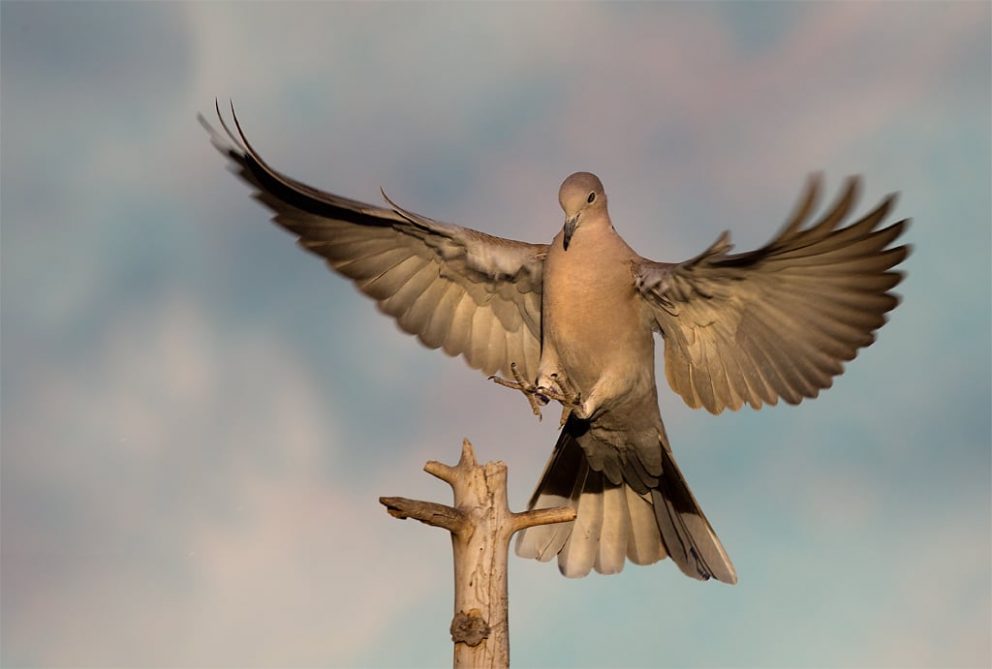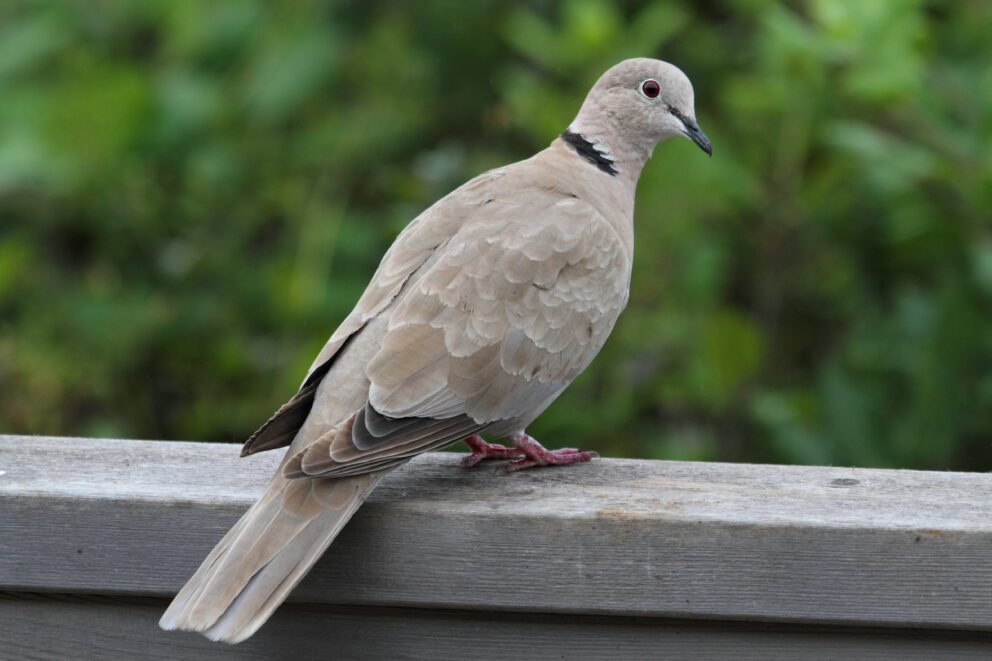- SCIENTIFIC NAME
- Streptopelia decaocto
- CLASSIFICATION
- Bird
- LIFE SPAN
- 1-3 Years
- SIZE
- 11.4-11.8” | 0.31-0.39lbs
- STATE CONSERVATION STATUS
-
- Unprotected
- FEDERAL CONSERVATION STATUS
- Least Concern
- GAME STATUS
- Game
- GAME TYPE
- Upland Game
- Washoe
- Humboldt
- Pershing
- Churchill
- Mineral
- Lyon
- Douglas
- Carson City
- Storey
- Elko
- Lander
- Eureka
- White Pine
- Esmeralda
- Nye
- Lincoln
- Clark
Habitat & Range
Eurasian Collared-Doves can be found in open and semi-open habitats, including urban and suburban neighborhoods, grasslands, agricultural fields, woodland edges, and roadsides. In cooler months, flocks may roost together in large trees.
- Agricultural Lands
- Developed Landscapes
- Grasslands
Threats
- Disease
Natural History
Eurasian Collared-doves are not migratory, but their young are strongly dispersive, aiding in the expansion of their range. They typically breed close to developed areas where seed and grain are easily available, and trees are present for nesting. In warmer regions, breeding occurs throughout the year, with a monogamous pair laying up to six broods a year. Males will advertise potential nest sites to females by giving a low-pitched koo-KOO-kook call at each site. Their call is faster-paced, shorter, and more incessant than that of the Mourning dove.
Fun Facts














